I spent 30 years trying to prove my brother didn’t die by suicide – he was killed by another man

On the evening of Friday, 9 December 1988, Sydney Harbour shook with a thunderstorm. Rain poured all night and across the city there were blackouts. Finally, at dawn, the sun emerged, the storm had passed.
At around 9am, Bryan Butson, his friend Paul Patterson and Paul’s 13-year-old son Stephen set out to go spear fishing along the rocks below the North Head cliffs in the beach-side suburb of Manly, 20 minutes north of the city. Wearing wetsuits and carrying spears and buckets, they made their way to the bottom of the cliffs, which tower 14 storeys above the ocean, and towards the sea pools. Then Stephen spotted a body.
It was lying on its side on some rocks. Fragments were strewn around and seagulls picked over the remains. A body, he shouted.
Bryan and Paul weren’t convinced. It’s probably an animal, they said. Moving closer, however, they saw he was right: this was the corpse of a naked young man.
Dr Johan Duflou, a forensic pathologist who examined the body, described it as having a ‘total distortion of the skull’.
Years later, speaking in a documentary series called Never Let Him Go, Duflou would say: ‘To me it was a routine case… It was approached as a suicide from the beginning.’
This too was the conclusion swiftly reached by the young police officer on duty. Constable Troy Hardie was just 24 when Stephen Patterson rushed into the station saying that he’d found a body.
Arriving at the beach just before 11am, Constable Hardie was joined by three other policemen and a paramedic. A helicopter took the body to Manly Hospital, and Bryan Butson, together with two policemen, went off to find the spot from which the man had fallen.
Climbing from the beach to the car park, they followed a dirt track uphill to a stone wall with a gate in it, through to the clifftop. There, around 10 metres from the edge, was a pile of clothes.
There was no obvious sign of a struggle, no suicide note either, just a pair of blue trousers and a long-sleeved shirt, both neatly folded, some green underwear and a pair of Adidas trainers. Along with the clothes were a few other items including a student identification card with an address almost 200 miles away in Canberra and the name of the man: Scott Johnson.
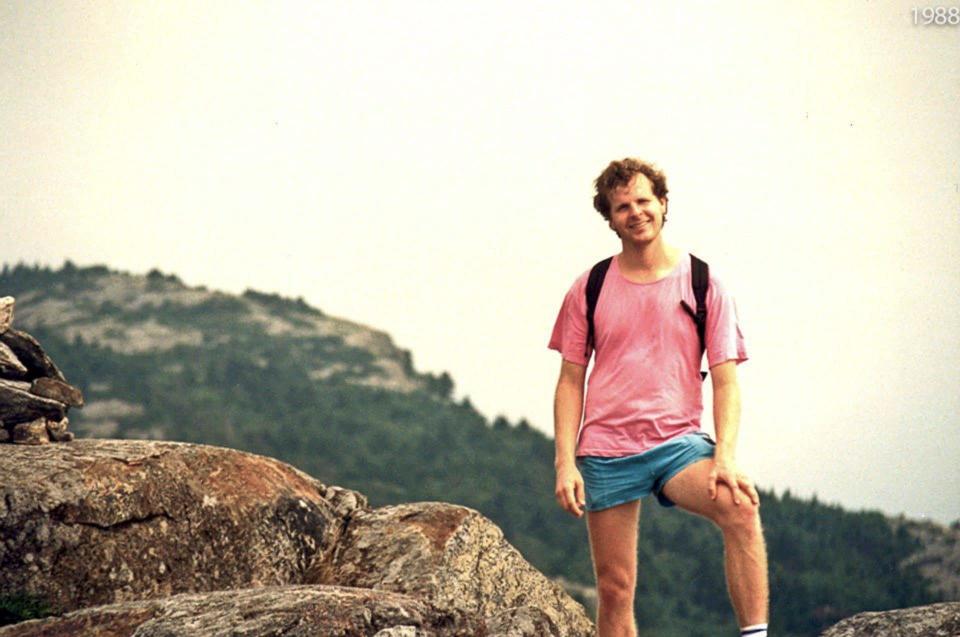
Police in Canberra were dispatched to the address, a small brick house in the suburb of Downer. No one was home so they left a voice message on the phone of the man who lived there. Michael Noone, a musicologist, would tell police that Scott Johnson was his very good friend. Later it emerged that he was his boyfriend. Scott, a Cambridge University-educated academic from California, was working on his PhD and divided his time between Canberra and Macquarie University in Sydney. For the last few days he had been staying in Sydney at the home of Noone’s parents.
Michael Noone got in his car and drove through the night, arriving at Manly police station the next morning. After being interviewed by Constable Hardie and identifying Scott’s body at the morgue, he went off to his parents’ house to break the news. Constable Hardie marked the police report as ‘NFA’: ‘No further action.’
It would be almost 30 years before they were proved wrong; the police constable and the forensic pathologist, and the coroner who, at an inquest held in March 1989, concluded the same: that 27-year-old Scott Johnson had jumped from the cliff with the intention of taking his own life.
It is a spring morning in June and Steve Johnson is sitting in the third-floor study of his home in Cambridge, Massachusetts, surrounded by piles of papers, neat white boxes overflowing with photographs, letters from his late brother Scott, his mathematical scribblings. He holds one up – an argument to do with lotteries. ‘Scott would write stuff like this in the same way that I’d write a letter to Grandma…’ he trails off.
Steve is 65 now, a father of three, soon to become a grandfather. He is tanned with a sweep of silver hair, a wide smile, piercing blue eyes. He wears jeans and a crisp blue shirt, and he sits with his hands folded, leaning forward, the confident air of a tech executive, but also a man on a mission, unable to rest easily.
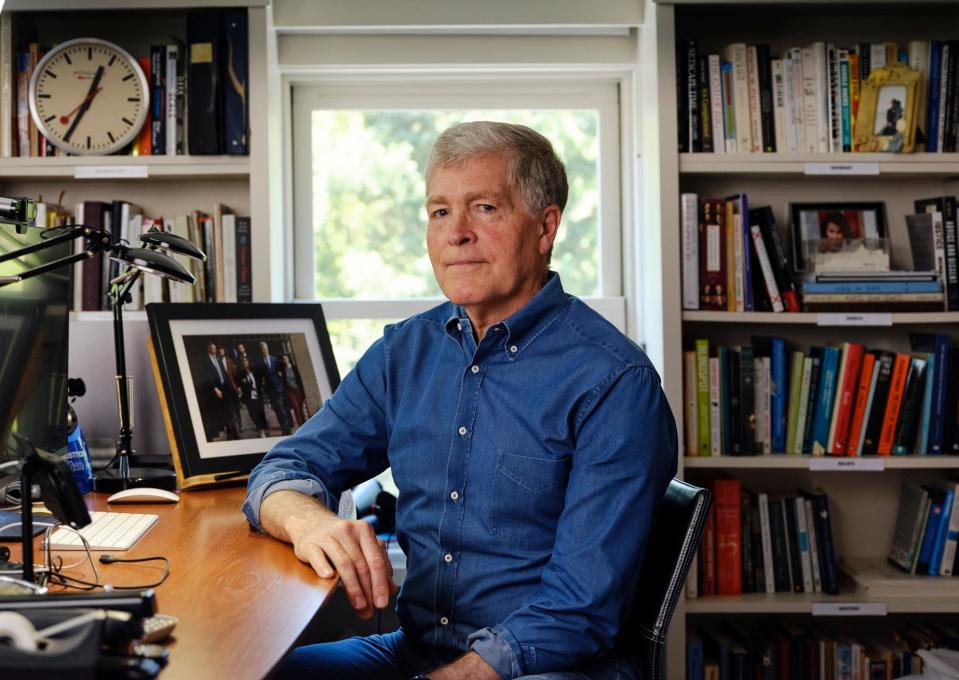
It’s 7am but he has been up for hours. He has three full-time jobs, he tells me, though technically he doesn’t need to work at all, having sold the tech company he co-founded to AOL for $100 million back in 1996. Now he’s the chief executive of an AI firm, Notable Systems, a senior fellow at Northeastern and Harvard Universities, and then there’s his primary job: campaigning for justice with the small group he calls Team Scott.
Scott’s story is one he has told for 36 years. There was the documentary last year and now he has written a book called A Thousand Miles From Care; it’s the reason we’re speaking today. A Hollywood film is in the works too – he’s excited that it’s being produced by Ben Stiller’s former production partner Nicholas Weinstock and he’s mulling over who he’d like to play him.
Only now things are different. For years he gave interviews because he wanted to catch a killer, but currently one is in prison. It took three inquests, successive police teams, a sting operation and a $2 million reward to get there – with Steve pushing throughout.
In 2020 a man called Scott White, more on whom later, was arrested. In 2022 he pleaded guilty to murdering Scott Johnson. Though sentenced to 12 years, the conviction was later overturned and in 2023 he pleaded guilty to the lesser charge of manslaughter, his sentence reduced to nine years. He could be eligible for parole in 2026.
White said that he met Scott Johnson at a hotel bar and they went for a walk to the clifftop then, during an argument, he threw a punch, causing Scott to stagger backwards and fall accidentally to his death. Steve has his own views on what may or may not have happened that day. He was disappointed with the sentence. It’s too short, he concedes, but he has made his peace with it. His greatest sadness is that his parents are dead, that they’re not there to see it.
‘Scott White did an awful thing and it tore our family apart. It ended my brother’s life.’ His voice cracks. ‘I don’t forgive him but I feel like he actually admitted his mistake…’ He adds pointedly, ‘In contrast to some police officers involved.’
Surely, then, it’s over? Now he can stop, enjoy his wealth and more time with his family? He shakes his head. ‘Looking at my situation, it’s been 36 years since Scott died, and the police put me through this. In some ways, the police allowed it to happen… I think there are many things that need to happen. So I’m not ready to rest yet.’
The story of Scott Johnson’s death – and of Steve Johnson’s life devoted to getting to the bottom of it – begins years before a boy stumbled upon a body at the foot of a cliff; it begins when their parents split up.
Grant Johnson met Barbara Geitgey in 1956 at the Aero cinema in Santa Monica. He was 24, the handsome popcorn popper and a dead ringer for Dick Powell, she was a 17-year-old high school student and was charmed. By the time Barbara was 18, they’d eloped and she’d had a daughter, Terry. Steve would follow 18 months later, then Scott on 27 November 1961.
It was a nomadic childhood. They lived in 17 homes around Los Angeles. Grant had ‘deep intellect’ but, as Steve puts it, ‘indifference’ to his children. He was a strict disciplinarian too. ‘[He’d] wash our mouths out with soap if we lied… Once or twice, I remember eating nearly an entire bar.’
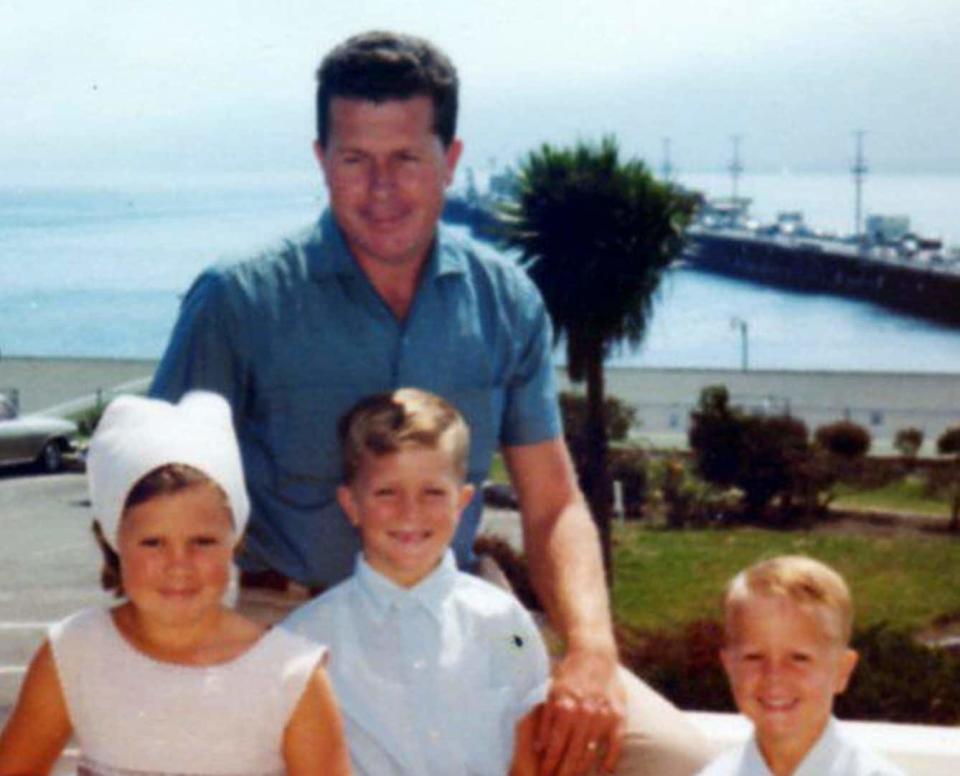
Life wasn’t always happy; their parents separated after 13 years and Grant started another family. Steve saw little of him. Barbara, meanwhile, scraped a living doing menial work, like rolling up copies of the local newspaper. The children mucked in – between them they’d roll up 5,000 a week. ‘I’d go to school with blackened hands, exhausted,’ Steve recalls. ‘Mom kept at it all day.’ It earned the family $40 a month.
Steve took a daily paper round, waking at 3am to begin; Scott went along to help and they’d carry water pistols filled with ammonia to keep vicious dogs at bay. They’d always done chores at home too, along with Terry; vacuuming and scrubbing toilets, cleaning out their father’s ashtrays.
‘As we matured, Scott and I began to adopt a more puritanical outlook,’ Steve writes. ‘We never drank or puffed a joint... We frowned at whatever we construed as bad behaviour. We were what kids now would label nerds.’
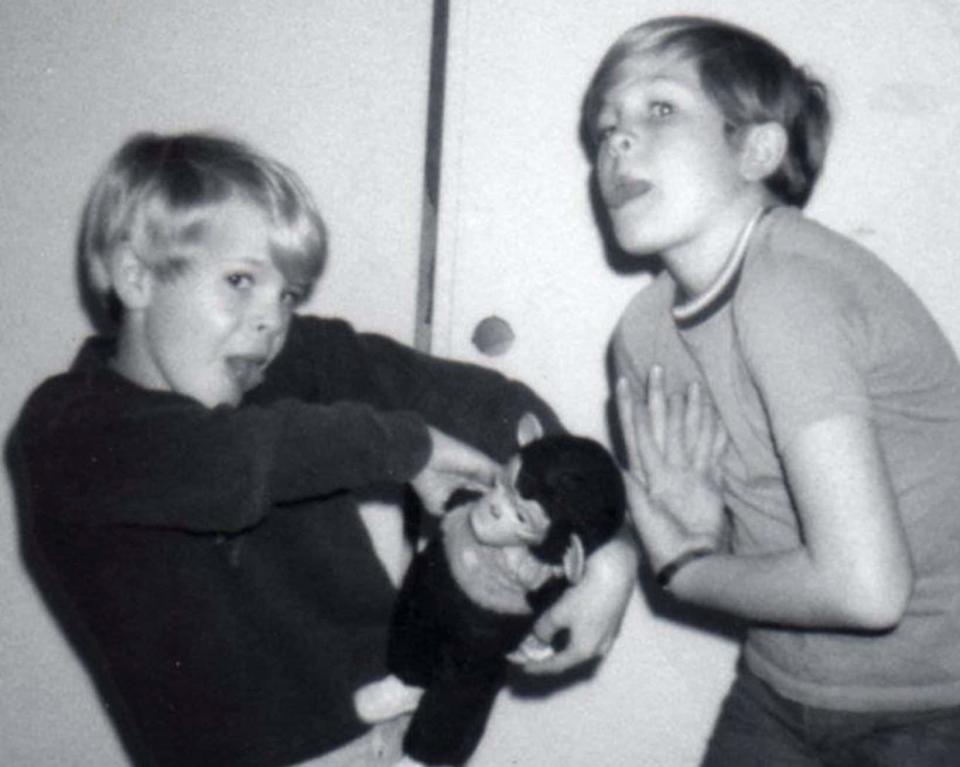
Scott was the sweeter, quieter of the pair. Steve remembers him as ‘shy and gentle’. He was deeply intelligent, winning a scholarship to Caltech, one of America’s top universities. His greatest achievement would come when, still a student, he began working at the Jet Propulsion Laboratory, the scientific arm of Nasa that Caltech manages, helping to develop pictures of the surface of Venus using mathematics.
‘The complexity of making such inferences at first overwhelmed Scott,’ Steve explains in his book. ‘Finally, in 1983, Scott got the models to line up. The contours of Venus’s surface snapped into view. His pictures ended up on the six o’clock news. At age 21, he had already advanced human knowledge.’
Scott went to Cambridge for a one-year maths programme, Steve to Harvard for a master’s degree in public policy, but in the summer of 1984 they reunited, working together on a computer consultancy gig and renting bunks at a fraternity house in Los Angeles. At night they’d often walk around the city, chatting.
On one walk, Scott opened up about his sexuality. ‘[He] told me he was agonising about strong romantic feelings for someone he’d met at Cambridge. He fumbled around until I guessed that he had got a girl pregnant. He answered, “No. She is a he.”’
Steve was stunned. ‘But also [I was] surprised that I was stunned. How could I be unaware of the sexual orientation of the person I knew best in the world? It turned out that Scott had been unaware too... He was fascinated by his feelings, and we analysed them together as we did everything else.’
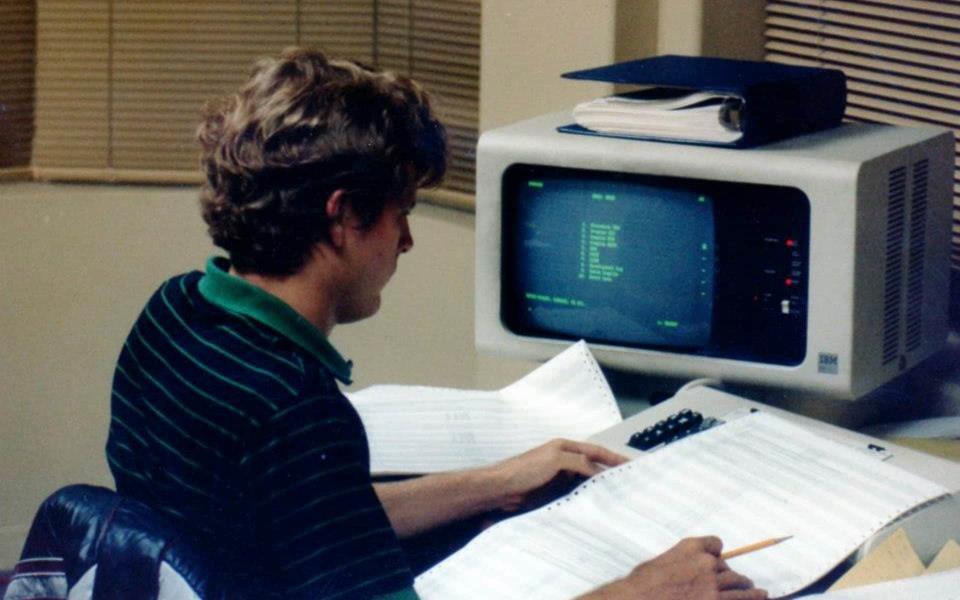
Soon after, Steve got engaged to his college girlfriend Rosemarie and Scott began a relationship with an Australian man, Michael Noone, whom he had met in Cambridge. In April 1986, Scott moved to Australia to be with him.
He still visited the US. Steve remembers the summer of 1988 as one of their happiest. He was living in a small apartment in Massachusetts at the time, Rosemarie was heavily pregnant, and Scott stayed for six weeks. They danced and hiked and tinkered on the computer.
‘We cooked up a program that could solve any problem,’ Steve previously said. ‘We didn’t get very far with that because he died…’
Steve was in Newport Beach, visiting his in-laws for the Christmas break, when he received a message from Michael Noone asking him to call.
Noone’s father picked up. He sounded distraught: ‘Oh god, Steve… This is terrible… Scottie’s dead… Michael’s down at the morgue.’
‘I was too shocked to move,’ Steve writes. ‘I can still feel the paralysis… I felt my world slowly come apart.’
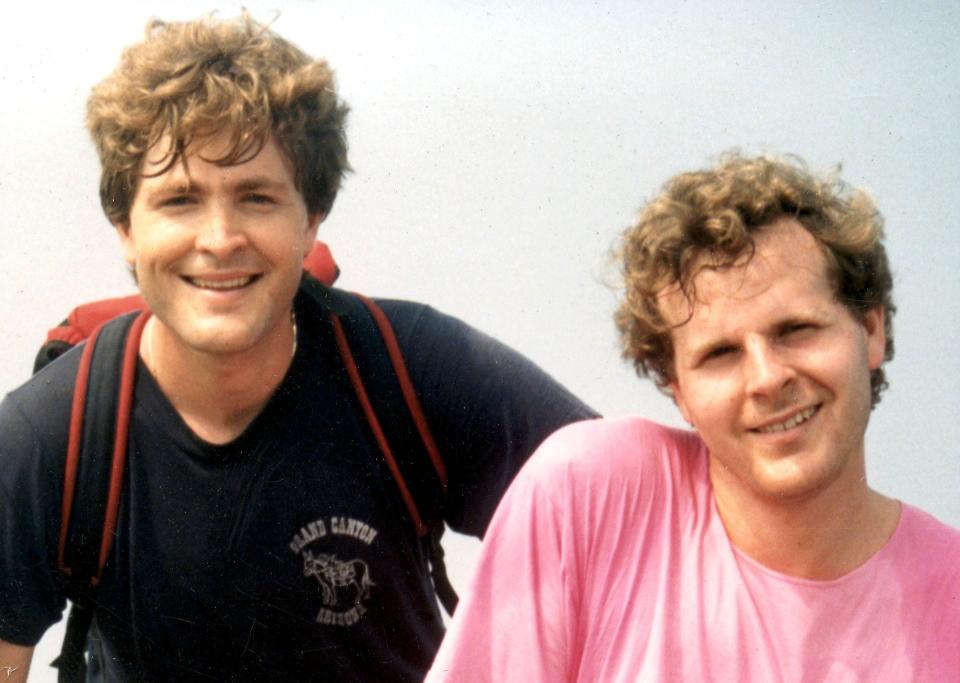
Rosemarie came in moments later and found him. ‘She folded herself in my arms, both of us crying uncontrollably.’
Part of the reason that Manly police determined that Scott took his own life was that the North Head cliffs were a common suicide spot. In his short career Constable Hardie had attended two other cases there. Then there was something that Michael Noone is alleged to have told him.
‘He indicated that Scott had had thoughts of, or may have previously attempted, suicide,’ Hardie once said. Noone later repeated this at a subsequent inquest, adding that it had happened at the Golden Gate Bridge, but that Scott hadn’t followed through.
Steve Johnson was unconvinced by the suicide theory. For one there was Scott’s missing wallet, a fabric one with a Velcro grip that he carried everywhere, only it wasn’t among his belongings on the cliff. Plus Scott was naked; ‘and there’s no such thing as a naked jumper’, he argues.
Then there was the fact he’d just become an uncle. Steve’s firstborn, Emma, was six weeks old when Scott died. He’d been excited, and keen to meet her, and kept her photograph under his pillow. Above all, there were his studies.
At 10am on the Thursday before he died, Scott had telephoned Professor Street, his supervisor, with news – he had a new proof for the final problem in his doctoral work. He sounded excited. They agreed to meet the following Wednesday.
‘So it’s just completely nuts to think that he went and decided to go and kill himself that day,’ Steve says.
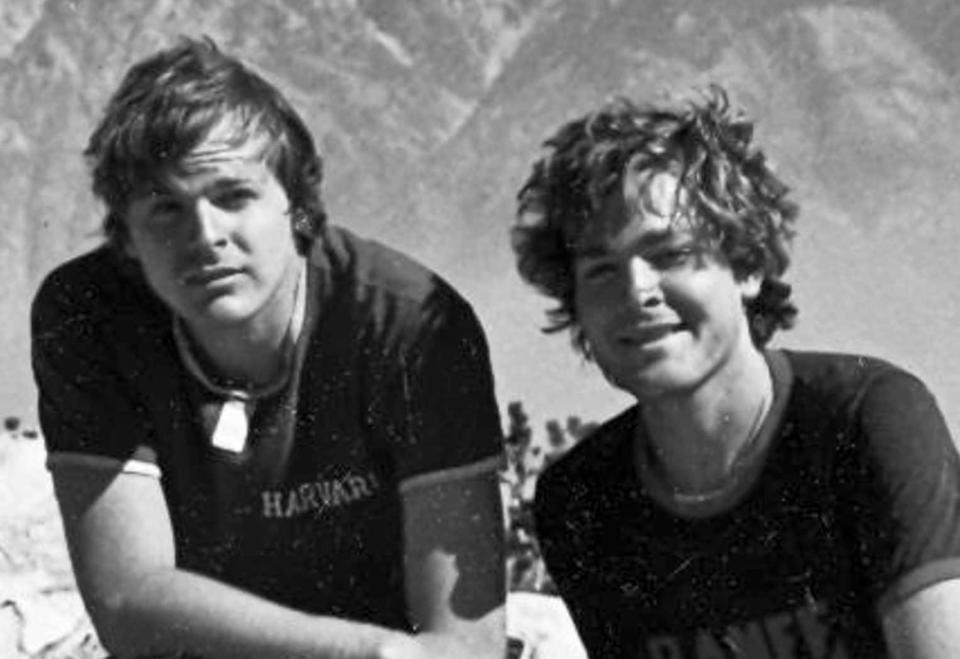
Three days after Scott died, Steve arrived in Australia, determined to get to the bottom of it. ‘Since he was naked, I felt sure Scott had been with someone. I wanted to know whether it was a secret lover or a stranger and whether he’d stumbled in a moment of passion, drunkenness or an altercation. I began to fear that maybe I didn’t know my brother at all.’
He questioned Noone about the state of their relationship. Had they argued? ‘[But] Michael seemed eager to put the whole thing behind him.’
Steve turned to the police next. Three weeks after Scott died he sent them a 50-page document, typed up on his typewriter, containing suspicions and suggested lines of enquiry. He tapped up friends too – his best friend worked in politics and asked the office of Senator Ted Kennedy to enquire through the US ambassador about Scott’s case.
Eventually Steve received a fax from a detective sergeant in Manly police. An inquest was scheduled for March.
Steve was 29 at the time, a broke PhD student, but he and Rosemarie scraped together the plane fare to attend. He can remember exactly how it unfolded.
‘The coroner said to me, “Well your brother was very smart, very shy and homosexual and unfortunately that correlates with suicide, so it’s an idea you’ll have you get used to” – that’s almost precisely his words.’ Steve tips his head and smiles gravely. ‘That’s how it stayed for 20 years.
‘There was just a mystery. We didn’t know what had happened, we didn’t even know how to talk about it.’
What was the impact on him? At this question, Steve goes quiet. ‘Well clearly it’s changed my life completely in dozens of ways. I was working on a PhD that I dropped. And, I had a year or two of grieving deeply – Emma was a baby so I sort of clutched…’ He looks away, blinking until he composes himself. ‘So I clutched her to me.’
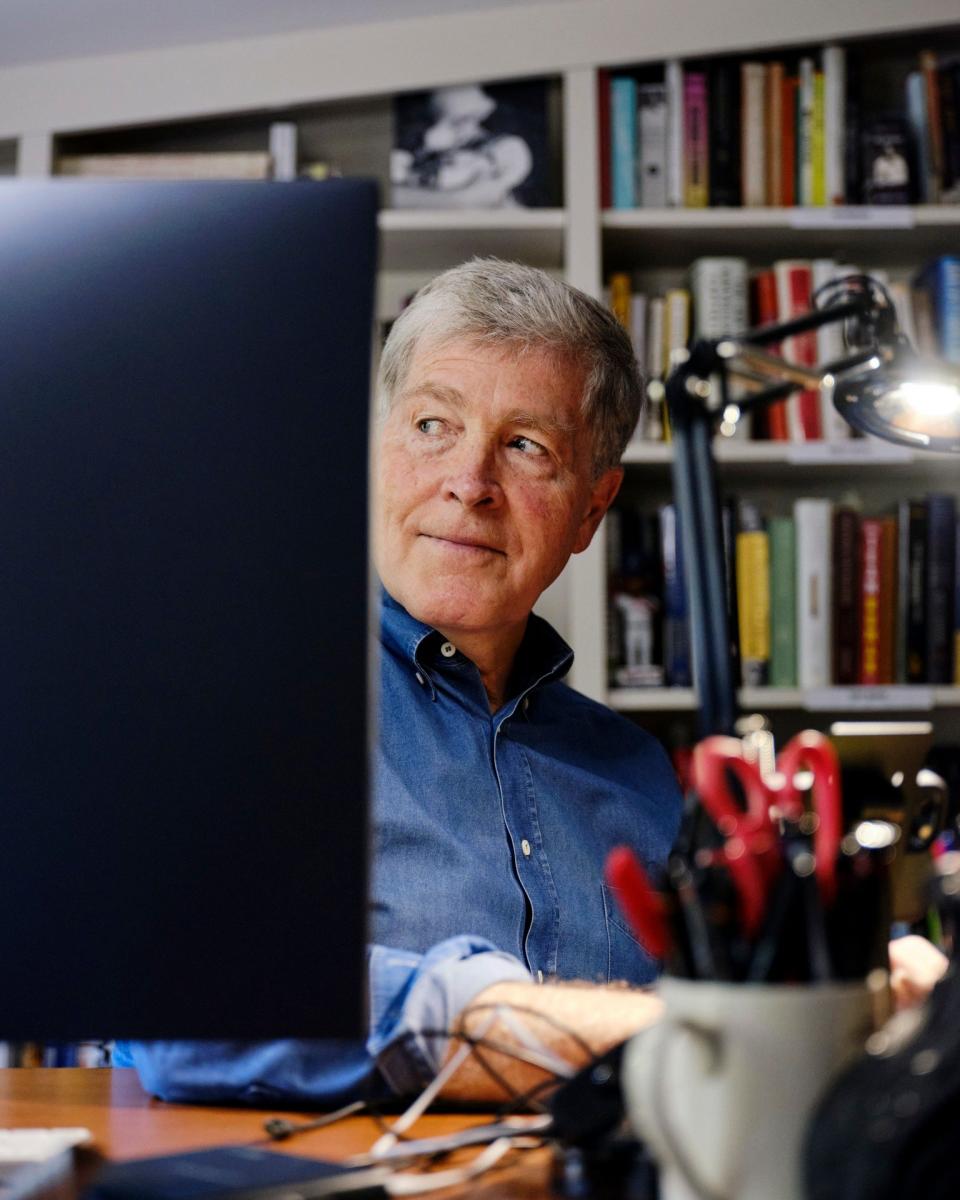
He buried himself in his computer too, going on to start a business, Johnson-Grace, with his friend and developing ways to compress images and videos online. After selling it and making his millions, he managed AOL’s software division, remaining there until 1999. But this was also bittersweet.
‘Scott was with me that whole time, helping me with the invention, encouraging me to take shortcuts... God only knows what we’d have invented together.’
Then, out of the blue, Michael Noone sent him a letter. It was 2005. He hadn’t heard from him for 16 years. The envelope contained newspaper clippings about three men who had died around the same time as Scott in strikingly similar ways. All three were gay.
‘That’s when I first learnt about gay beats,’ he says – hangout areas where men meet to sunbathe, to chat, to hook up. ‘Often gangs in New South Wales state [would] come to these beats, where young gay men would congregate, and they’d attack them…
‘When I hired my own investigator it took him one day to establish that [the place where Scott died] was a gay beat.
‘It makes me feel terrible that I didn’t know it [years earlier],’ he continues. ‘All I knew was [what] this constable was telling me... He wasn’t telling me there was violence all over town against gay men.’
With the help of an investigative journalist he’d engaged, Steve successfully petitioned for a second inquest. His half-sister Becca, a solicitor who had worked as a lobbyist, pitched in too over the years. On 27 June 2012, the coroner returned an open finding and referred the case to the unsolved homicides unit.
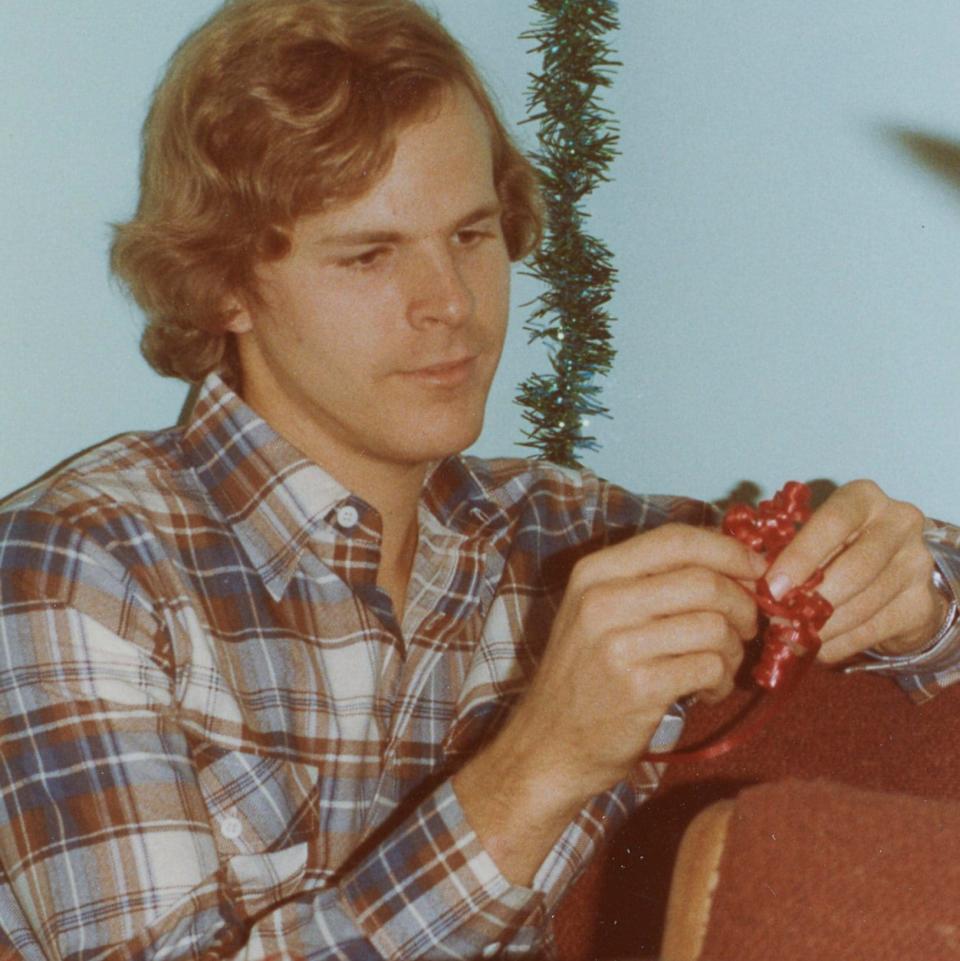
That summer Steve took Scott’s ashes to Switzerland and scattered them in the Alps. Their mother had recently died. He remembers standing on a snow-capped summit, covered with clouds and watching as they blew away. Finally, an ending seemed in sight.
Until, that is, he and Rosemarie travelled back to Australia later that year to meet with the detective inspector at the unit. Steve claims he was told that the case had ‘a zero solvability index’.
‘This sounded ridiculous,’ he has previously said. ‘For starters Scott’s case had never been investigated.’
Was he angry? He considers this. ‘I think if the police had actually taken up Scott’s case [at that point] and solved it, I’d have thought, OK, better times. Those were the bad old days. But they battled me tooth and nail.’
Team Scott set to work, writing to the mayor, to politicians, to the state coroner. They filled notebooks with timelines and trawled social media, tracking gangs and ‘gay bashers’.
In February 2013 the case was covered on the popular television show Australian Story. Later Mike Gallacher, the minister for police and emergency services, invited Steve to a meeting, together with Pamela Young, the detective chief inspector now appointed to the case.
The meeting went badly. Gallacher would later say of Young: ‘It was embarrassing to invite a victim’s family to my office then to see a dismissive approach in relation to the investigation.’
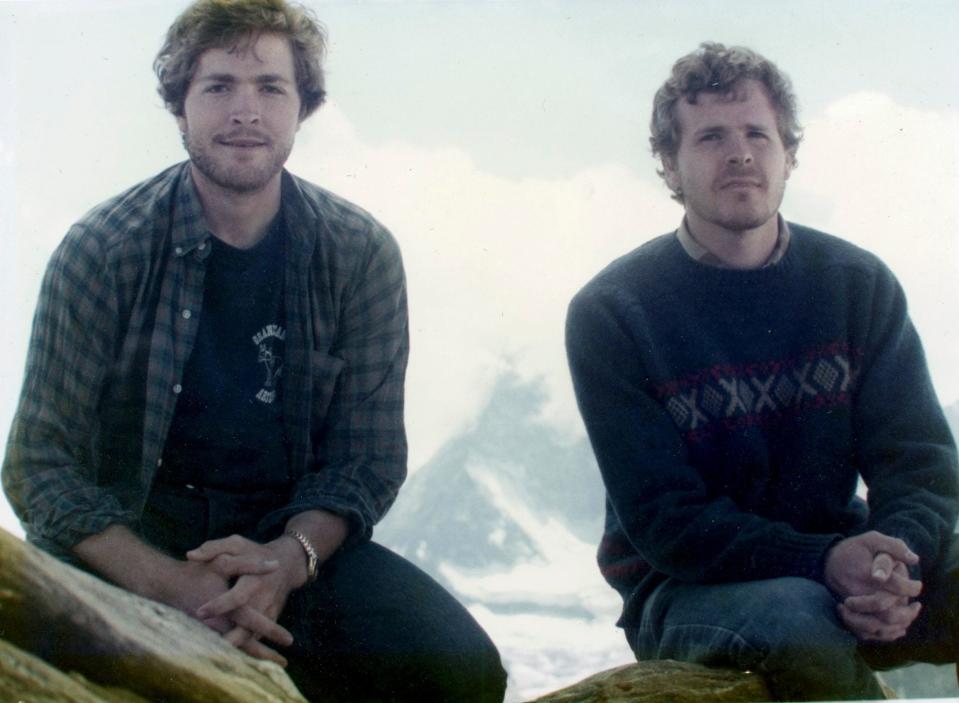
Afterwards Steve offered to meet her and share his team’s research. Young, he claimed, told him she wouldn’t be ready to meet.
Young had her own reasons. She has previously argued that there were hundreds of unsolved murders or suspicious deaths on the books. Why was it fair, she asked, that someone who could ‘afford’ to raise the profile of one case ‘so relentlessly’ should jump the queue?
Speaking about the case on a current affairs show called Lateline, Young also accused the minister of ‘kowtowing’ to Steve Johnson. She was later removed from the investigation.
Finally, in 2016, came a third inquest – almost unprecedented in New South Wales history. This time the coroner concluded that Scott Johnson was the victim of a gay-hate attack.
Though Steve never believed a culprit would be caught, another new team was appointed to the case. And on 12 May 2020, Scott White was charged.
A stout, unremarkable-looking man in middle age, he lived alone with his dog in a small apartment at the time of his arrest. Later, a court would hear that he had spent time living on the streets. He was 18 when Scott Johnson died. He claimed to be gay himself.
An anonymous tip-off letter, written by his ex-wife, had led police to him. She was 17 when she first met him. Speaking in a documentary, she has said: ‘He’d talk about going poofter bashing… [He used to say] “the only good poofter is a dead poofter”.’ In 2008 she read an article about the death of Scott Johnson. ‘So you did this?’ she said to White. ‘It’s not my fault if the dumb c—t ran off the cliff,’ he is alleged to have replied. Years later, after speaking to a counsellor, she sent the letter to police.
After investigating, a sting operation was set up, which led to White admitting his crime to two undercover police officers and leading them to the spot from which Scott Johnson fell, hidden cameras in place to capture it.
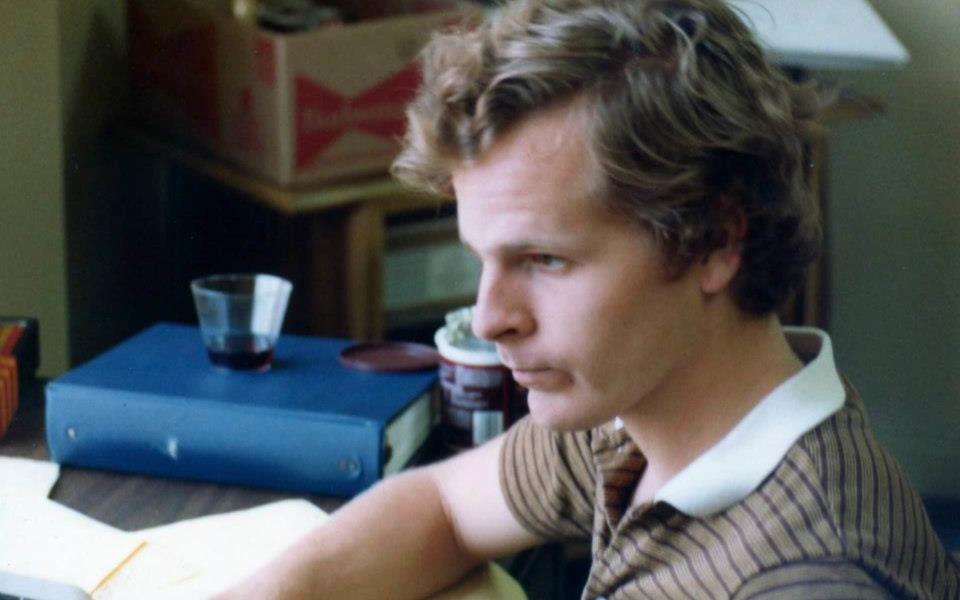
Steve tells me he finds it hard to imagine his brother, a maths scholar, having lengthy conversations with White, who was nine years his junior and poorly educated; plus there were many other spots on the way that they could have stopped at for a tryst – why walk for so long together?
But his ire is saved for the New South Wales Police officers who failed to investigate more thoroughly from the start.
‘[I want to see] an acceptance in a public statement or two from the police about the mistakes they made in the past,’ he says. ‘[They] need to work on the 30 or more cases of gay men that have not been solved.’
In November 2022, a special commission of inquiry began examining suspected hate crimes targeting LGBTQ people in New South Wales between 1970 and 2010.
A report, released in December 2023, made 19 recommendations, including fresh inquests, and accused some police officers of ‘compounding the violence’ by being ‘indifferent, negligent, dismissive or hostile’.
Steve Johnson is waiting to discover what will come of it. ‘I really want to make sure that something’s done with the recommendations – then I will be transitioning to spend more time doing what I can to bring the internet under control...’ He pauses. ‘I wish I were 32 again, that I hadn’t aged all this time.’
In his book, he admits that his family sometimes worried about his focus on the case. ‘At times I noticed with my kids, and even with Rosemarie, that conversations about Scott were muted by concern that I was obsessed with a question I might never be able to answer, or that [it] prevented me from moving on to a less painful stage of grief.’
I ask what stage his grief is at now, 36 years on, having spent so much of it in battle.
He looks a little stunned. ‘You know, I’ve never been asked that… Let’s see…’ He sits back in his chair and ponders. ‘I would say my brother is always with me, in every sense. He was a brilliant man who had a gift… Often I find myself thinking what kind of life he could have led. He’d be 63 now.’ He says this off the cuff, taking no time to calculate it. ‘No doubt he’d have kids of his own, lots of accomplishments. [So] Scott White didn’t just kill a 27-year-old. He killed someone who could have lived a full life for 80 or 90 years…
‘And as for me working on my brother’s case – I didn’t have any choice.’ He pauses. ‘It was sort of the mission I was given and I had to see it through.’
A Thousand Miles From Care, by Steve Johnson, is out now (HarperCollins, £20); order at books.telegraph.co.uk

